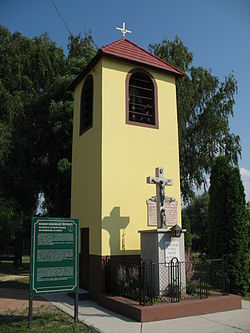The village name is built of two parts, which is suggest, that it was once two villages, which was built together. The "Vámos" part suggests that Alsóvámos was a tax collector location for centuries. The "Szabadi" part is preserves the name of a former village, Győrszabadi. The north aimed traffic has one of the frontier stations here. The traffic transmitting bridge of the Danube (Duna) has a cultural historical value. The XIV. century church destroyed in the Turkish wars. A church built in the middle of the last century has frescoes and oil paintings which were painted by an unknown Italian painter. Vámosszabadi was affected by flood in 1896. The church was renovated in 1994. Vörösrét can be found to the north of Vámosszabadi. Körtvélylapos lies between the south-western and western channels of the village. In the Szigetköz you can find rare plants specific to this area e.g.: reed buttercup, water mint. There are four fishing lakes with sparkling waters located in the centre of the village. On the crest of the settlement there is a standing lion on the left side represents that the former villages belonged to the Hédervár family’s possession for more than 600 years long. On the right side of the crest can be found a ploughshare with the edge turned outward and to the left is a coulter, they are together symbolizes the agricultural character of the settlement. An oak-leaf wreath embracing the crest around represents the forests which are surrounding these villages. The interwoven garland symbolizes the two settlements merge in 1950.
